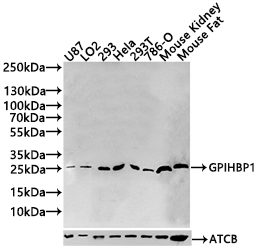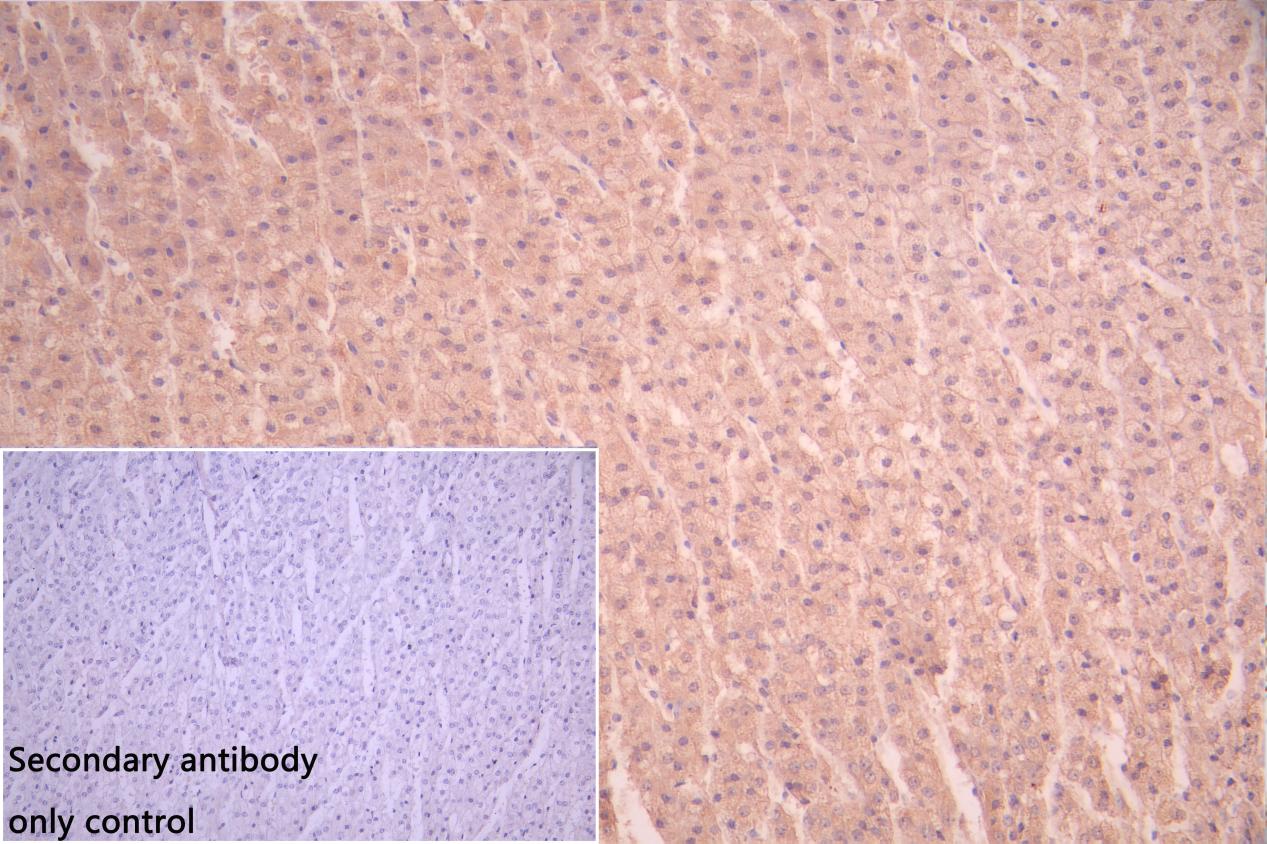The GPIHBP1 antibody was derived from the rabbits immunized with the recombinant human GPIHBP1 protein (21-151aa). This rabbit anti-human GPIHBP1 polyclonal antibody was tested to detect human, mouse, and rat GPIHBP1 proteins in ELISA, IHC, and WB applications. The non-conjugated IgG got purified by protein G and reached up to 95% in purity.
The target protein GPIHBP1 is essential for the proper functioning of lipoprotein lipase (LPL), allowing LPL to efficiently break down triglycerides in circulating lipoproteins, such as chylomicrons and very-low-density lipoproteins (VLDLs), and to release free fatty acids for use by the body. This process facilitates efficient triglyceride metabolism and helps maintain healthy lipid levels in the bloodstream. Defects or mutations in GPIHBP1 have been linked to familial chylomicronemia syndrome (FCS), a rare genetic disorder characterized by severe hypertriglyceridemia due to impaired LPL activity.








